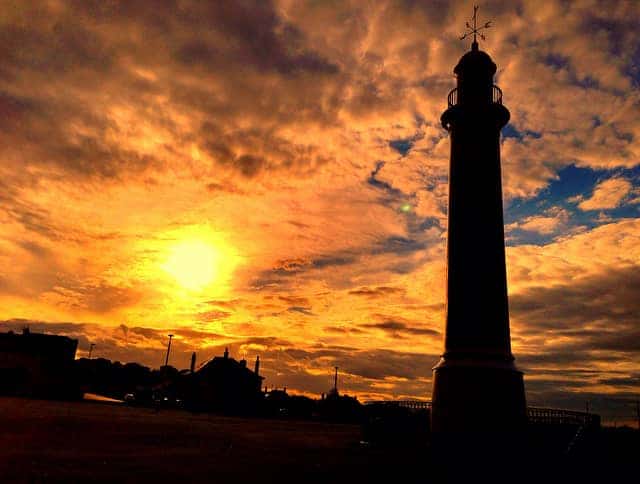The Sunderland area is home to a number of significant sites in British history. Sunderland Council have posted a map of the 78 “Blue Plaque” sites across the area and SR News has picked 10 sites you should visit:
1 | Wearmouth Bridge
The Wearmouth Bridge has two blue plaques. The original bridge which was built in 1796 is commemorated, as is the 1929 re-build which was built around the structure of the original bridge in order to allow traffic to continue using it during construction. According to the plaque itself the bridge proved to be a “catalyst for the growth of Sunderland.”
2 | Webster’s Ropery
The site of the “World’s first patent ropeworks,” Webster’s Ropery was originally built in 1793 – coincidentally the same year the foundation stone of the original Wearmouth Bridge was put in place. The Ropery became derelict and remained so for a number of years. Now it’s a wedding and christening venue that can cater for a number of commercial events.
We asked the Webster’s Ropery for comment but they failed to respond.
3 | Church of the Holy Trinity
This Grade I listed building was built in 1719 as the church for the Parish of Sunderland. No longer used for regular worship, Holy Trinity is now under the stewardship of the Churches Conservation Trust in an attempt to restore it to its former glory, which they hope to do in the next few years.
A spokesperson for the Churches Conservation Trust commented:
“Holy Trinity is one of only two early Georgian churches in the North East of England, it’s both architecturally and historically important – it’s where the city of Sunderland began.
“2019 marks its 300th birthday and CCT are undertaking a huge conservation and restoration project that will see it reopen to the public in 2020 as The Canny Space, a project that will reconnect the city with its past by transforming Holy Trinity into a cultural and heritage venue that brings the stories of the church and Old Sunderland to life through interpretation, events and performances.”
4 | Prospect Row Mission
The Prospect Row mission has been running since 1885. The importance of the building is significant, however, as it is the first public building to have outward opening doors. This was in response to the Victoria Hall Stampede of 1883 when 183 children died at an entertainment show – the worst accident of its kind in British history.
5 | Coastal Watch Mirror
A vital part of British defences during World War I. The convex dish was able to detect German Zeppelins sent to bombard the North East. The apparatus was used to judge the distance to the Zeppelins using their engine sounds. This gave our forces 15 minutes to direct anti-aircraft defences onto the incoming enemy.
“The Coastal Watch Mirror is a real historic gem,” explained World War I historian Keith Gregson. “Few people realise that the First World War threw up a pretty effective precursor to Radar and this listening device, the consequence of a Zeppelin raid on Sunderland, was considered a real success.”
6 | Bobby Gurney
A Black Cats legend, Bobby Gurney holds the record for the most goals in a Sunderland shirt to this day – 288, a phenomenal total. Born in Silksworth, Bobby worked in the pits after he left school. He went on to represent England in a friendly against Scotland in front of 129,693 spectators in 1935. He won the FA Cup and First Division title with Sunderland before moving into management.
We asked a Sunderland AFC representative for a comment but they chose not to respond.
7 | Wing Commander Claude Alward Ridley
A pilot in World War I, he was awarded the Military Cross for helping defend southern Britain from the German air raids and Zeppelin attacks. He also lived behind enemy lines after he was taken prisoner by the Germans. He escaped and spent several weeks running from authorities before returning to England via Holland. He was born at Mere Knolls House in Sunderland.
“It is appropriate that one of a number of young Sunderland born First World War flyers should be recognised for bravery” says Keith Gregson. “He was only a teenager and his wartime escapades are well worth reading about.”
8 | Charles William Alcock
“The founder of the FA Cup” was born in Sunderland before moving to Essex. On the July 20, 1871 he proposed “That it is desirable that a Challenge Cup should be established in connection with the Football Association, for which all clubs belonging to the association should be invited to compete,” in his role as FA secretary.
We approached the Football Association for comment but they failed to respond.
9 | The British Day School
The birthplace of Sunderland Association Football Club, at a meeting in October 1879. The building was the British Day school – originally called Sunderland and District Teachers’ Association.
We asked a Sunderland AFC representative for a comment but they chose not to respond.
10 | RAF Ushworth
David Charles, a WW2 historian, explained: “607 Squadron, part of No.13 Group, was based at RAF Ushworth when the German Luftwaffe launched the largest daytime raid on the North East of England. Flt Lt Francis Blackadder succeeded in defeating the invaders.
In total there are 77 “Blue Plaque” sites across the Sunderland area – and one “White Plaque” site. Take our quiz and see how many of them you can name:
Link | https://www.sporcle.com/games/bh39pm/sunderlands-blue-plaque-sites



